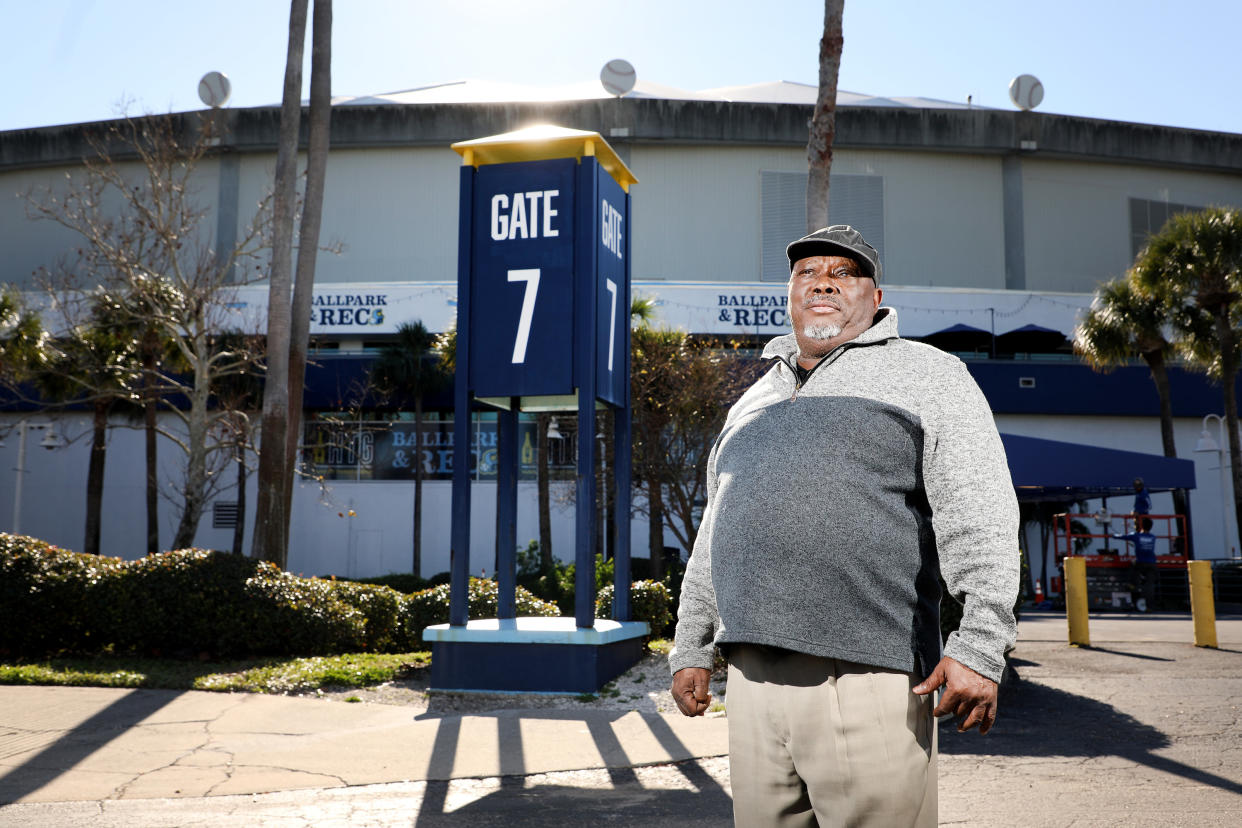Rays stadium updates: 5 things to know about the St. Petersburg stadium deal

St. Petersburg and the Tampa Bay Rays are closing in on a groundbreaking deal: A 20-year redevelopment of the 86-acre Historic Gas Plant District, centered around a long-awaited new baseball stadium.
Led by the global Hines Co., the proposed plan could cost billions of dollars and change the landscape of the city in a major way.
It won’t be official until the St. Petersburg City Council and Pinellas County Commission approve the terms of the deal, which could take until early next year. But the Rays seem more confident than ever about reaching an agreement. If it goes through, the Rays kick off a 30-year contract by playing inside a new stadium as early as 2028.
Here’s what you need to know about the proposed plan.
1. What’s the capacity of the new Rays stadium and its parking lot?
The new stadium will be built near the current Tropicana Field site as part of the redevelopment of the Historic Gas Plant District.
The stadium will seat around 30,000 (compared to the 42,735 seats currently) and have a fixed pavilion roof and artificial turf field. Florida fans, rejoice — there will be air conditioning, but also windows and “operable walls to bring the outside in.”
The overall redevelopment plan calls for 14,000 parking spaces, though that won’t all be available right away.
“In order to break ground on the new ballpark, we’re going to have to take some of the existing parking out of play,” said Hines senior managing partner Michael Harrison at a press conference Tuesday. “So it’s really like a giant jigsaw puzzle. We’re building new parking facilities that will be dedicated to the ballpark and available for public use, when it’s not in play for baseball, and that’ll free up the area that we need to begin construction on the ballpark.”
2. What else does the overall redevelopment plan include?
Housing: The plan mentions 4,800 market-rate residential units, plus 600 at affordable/work force prices and 600 for seniors. St. Petersburg Mayor Ken Welch has prioritized affordable housing, and the latest plan has increased the number of units nearly 50% from the previous proposal.
Business and retail: There will be 1.4 million square feet of office and medical space, 750 hotel rooms and 750,000 square feet of retail space.
Entertainment: St. Petersburg may also be getting a new home for the Woodson African American Museum of Florida and a concert venue with a capacity of 3,000-4,000. There will also be a park and promenade fronting Booker Creek.
About 20% of this redevelopment should be in place when the stadium opens, including the full-service hotel, some of the affordable housing units and some of the retail, food and beverage options.
3. What will happen to the Historic Gas Plant District?
When Tropicana Field was built, hundreds of Black families were displaced when their homes were razed to create space for the stadium. This area is known as St. Petersburg’s Historic Gas Plant District
“The area, which spanned south from First Avenue South to Fifth Avenue South, between Martin Luther King Jr. and 16th streets, first bloomed in the early 20th century when Black families were pulled south for railroad jobs,” wrote Times enterprise reporter Lauren Peace. “By mid-century, the Gas Plant — named for two gas cylinders that jutted from neighborhood’s west side — was a bustling safe haven amid Jim Crow-era segregation.”
Welch’s family grew up in the Historic Gas Plant District. Now St. Pete’s first Black mayor has pledged to center equity at the heart of the redevelopment plan, making good on promises that were broken as far back as the 1970s.
For more on the area’s history, check out her story.
4. Who will pay for the new Rays stadium?
The overall redevelopment plan has a hefty price tag: $6.5 billion.
The team, the city of St. Petersburg and Pinellas County will share the cost of the stadium, which is expected to reach $1.3 billion or more. Public funds will cover roughly $600 million, split between the city and county.
The Rays will cover the rest of the $700 million expected cost. Earlier this month, Rays principal owner Stuart Sternberg said the team is expected to “pay for half or more” of the stadium project. The Rays are hoping investors will contribute in exchange for shares in the team.
St. Petersburg is prepared to spend up to another $130 million for public infrastructure around the stadium.
“That money will not come from property taxes, though, St. Petersburg Mayor Ken Welch promised during a news conference after the announcement ceremony Tuesday,” Times writer Jack Evans reported. “Nor will it require new or increased taxes. The city will fund its portion, he said, through ‘bonding of a number of revenue streams.’”
Here’s more about how the stadium is expected to be funded.
5. What about the Ray stadium concessions and fan experience?
Not many specifics have been shared about features such as concessions, but the plan states that fans and players alike will be treated to state-of-the-art amenities.
Wondering what will happen to the stingray touch tank, where fans encounter actual rays inside Tropicana Field? One rendering shows a large, two-part tank in centerfield, which could mean the tradition will continue.
Times staff writers Marc Topkin, Bernadette Berdychowski, Lauren Peace, Jay Cridlin and Jack Evans contributed to this report.
• • •
Sign up for the Sports Today newsletter to get daily updates on the Bucs, Rays, Lightning and college football across Florida.
Never miss out on the latest with your favorite Tampa Bay sports teams. Follow our coverage on Twitter and Facebook.

